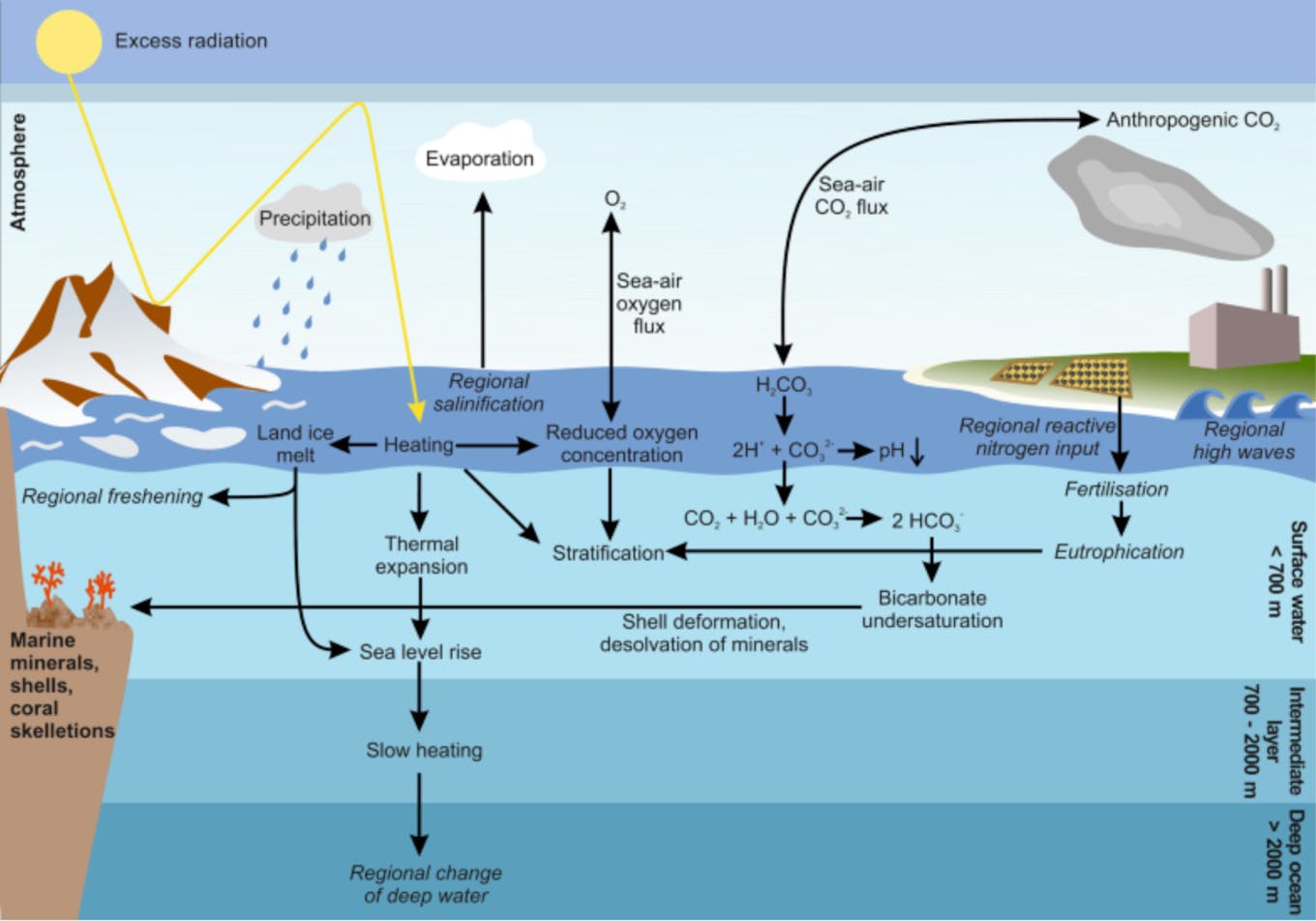Last year, sea surface temperatures and the energy in the upper 2,000 metres of the ocean both hit record highs, according to a recent study in the journal Advances in Atmospheric Sciences.
To continue reading, subscribe to Eco‑Business.
There's something for everyone. We offer a range of subscription plans.
- Access our stories and receive our Insights Weekly newsletter with the free EB Member plan.
- Unlock unlimited access to our content and archive with EB Circle.
- Publish your content with EB Premium.
In 2023, the oceans soaked up around 9 to 15 zettajoules more heat energy than in 2022, which is enough to boil 2.3 billion Olympic-sized swimming pools, said the US National Oceanic and Atmospheric Administration and the Chinese Institute of Atmospheric Physics.
Analyses show that the amount of heat in the oceans has increased dramatically since the 1950s.
Why are ocean temperatures reaching uncharted levels?
Oceans, which cover 70 per cent of Earth’s surface, are the largest heat sinks on the planet, absorbing more than 90 per cent of the warming that has occurred in recent decades, according to Dr Tan Koh Siang, senior research fellow at the Tropical Marine Science Institute (TMSI) in Singapore.
Dr Nicholas Yap, research fellow at the St John’s Island National Marine Laboratory, added that ocean surface temperatures are rising due to human-induced climate change.

Overview of climatic changes and their effects on the oceans. Source: Phytoplankton Responses to Marine Climate Change
Dr Tan said that global warming causes air temperatures to rise by releasing heat-trapping greenhouse gases, such as carbon dioxide, into the Earth’s atmosphere. Hot air warms the oceans since water is usually cooler than the air above it, he said.
Dr Patrick Martin, assistant professor at Nanyang Technological University’s Asian School for the Environment (ASE) said that the ongoing El Nino event that causes the warming of waters in the eastern Pacific Ocean, is also responsible for the rise in ocean temperatures.
Ocean warming is unevenly distributed as there are local effects, such as seasonal oscillation, that moderate general climate trends, noted Leong Wai, research associate at TSMI.
Dr Joyce Ong, assistant professor at ASE, said that Singapore sits within the Indo-Pacific Warm Pool (IPWP), an area of the tropics with very warm sea temperatures constantly. The IPWP has warmed and doubled in size over time because of climate change, she said.
Are rising ocean temperatures a bane or boon?
While some studies suggest that ocean warming might expand resource-rich marine areas, there is little evidence that indicates that ocean warming will bring long-term benefits, said Dr Yap.
But evidence relating to the problems caused by ocean warming is plentiful.
Rising ocean temperatures deplete the amount of dissolved oxygen available in the water, increasing the number of fish die-offs, said Leong.
Ocean warming can cause coral bleaching, which occurs when water becomes too warm and corals expel the algae within their tissues, noted Chen Mengli, research fellow at TSMI.
Leong said that warmer waters have been linked to harmful algal blooms and ecological transitions, such as coral reefs becoming algae-dominated due to more frequent bleaching.
In Singapore, a country that is looking to boost aquaculture to improve food security, the increased likelihood of fish kills and algal blooms will have a disruptive effect, he said.
Societal implications include a proliferation of jellyfish blooms that endanger public health and the possibility of dormant viruses being released when the polar ice melts, Dr Yap noted.
Warmer oceans also make hurricanes stronger for longer after reaching land, ramping up damage wrought on impact, according a 2020 study in the scientific journal Nature.
Simultaneously, sea levels are set to rise because of two factors related to global warming: added water from melting polar ice and glaciers, and the expansion of seawater as it warms.
Rising sea levels could lead to devastating outcomes, ranging from sand erosion to wetland flooding and agricultural soil contamination.
“Fire-ice”, or methane hydrate, a natural gas frozen deep beneath the ocean floor, could be thawed during ocean warming, releasing more heat-trapping methane and creating a positive feedback loop that amplifies climate change, according to a recent study in the scientific journal Nature Geoscience.
Marine heatwaves could cause polar species to go extinct, as with the collapse of the Alaska snow crab fishery in 2022 due to an unexpected. Large numbers of crabs starved to death as a result of their metabolic rates rising with higher water temperatures and an inability to find sufficient food.
Warmer waters are also not ideal for marine organisms in the tropics, since they are already living very close to their upper temperature limits for them to function normally, said Dr Tan.
Warmer oceans directly impact the physiology of marine organisms, for instance, by altering their metabolic mechanisms or interfering with their reproductive cycles, Dr Martin added.
Some fish, such as herring and whiting, for example, need stable water temperatures to spawn and maintain healthy populations, and sudden warming can decimate these fisheries.
Other fish, such as black seabream, are leaving coastal areas for deeper waters, exacerbating economic inequalities between big fisheries and under-resourced fishermen while worsening the livelihoods of coastal communities, said Dr Chou Loke Ming, research affiliate at TSMI.
Ocean warming in the United Kingdom has also driven fish such as cod to migrate north in search of colder water, disrupting food webs.
However, thanks to fish migration, Portuguese fisheries have reported nearly 20 new species from tropical or subtropical climates, according to a 2016 study in the journal Fisheries Research.
A raft of opportunity
Experts said that the best solution to prevent rising ocean temperatures is to curb man-made greenhouse emissions that contribute to global warming, and by extension, climate change.
“By switching to renewable energy, we can wean off our reliance on fossil fuels,” said Dr Martin.
There is also a need to cut down on agricultural land use, which accounts for one-tenth of global greenhouse gas emissions, he said.
Leong said that this can be done by reducing meat consumption or exploring plant-based substitutes such as alternative protein.
Dr Ong said that sequestering carbon can also reduce the amount of greenhouse gases in the atmosphere. One way is to avoid cutting down carbon-storing forests, she added.
Technologies such as 3D printing offer hope by recreating artificial habitats to help displaced fish find new homes, while Artificial Intelligence could help to automate coral reef restoration.












